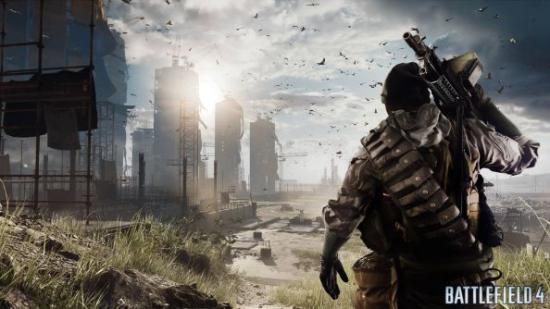AMD hosted an expensive GPU 14 Tech Day Event yesterday – expensive because they insisted on having it in Hawaii, where they don’t live, and flying out a bunch of journalists, who also don’t live there.
But that’s just the sort of thing you have to do if you’ve named your new range of graphics cards ‘Hawaii’. The Hawaii chips are based on what AMD calls its Graphics Core Next Architecture, and come in both a high-performance series, the R9, and low budget compromise, the R7.
And then there’s something else: a new API designed to skip DirectX altogether, for the benefit of games like Battlefield 4.
AMD’s Mantle (so named because it’s a ‘low-level’ API, see?) will allow supported games to talk to the graphics card directly, rather than through its usual translator, DirectX11.
The manufacturer suggested that the system was similar to that used in console development, and will noticeably improve performance for games which, yes, include Battlefield 4. Frostbite 3 games will be opened up to a host of potential low-level optimisations, the audience were told. Mantle will only be available on AMD’s Graphics Core Next GPUs, however, so you’ll need to own something from their 7000 series or the new Hawaii lot.
The Hawaii chips are based on the second generation of this Graphics Core Next stuff.
AMD quoted Jon Peddie Research’s assertion that the PC market for GPUs will grow to $21 billion by 2017 as justification for their continued emphasis on high-end cards. But the assembled journalists found themselves bracing for a frankly offensive pricetag that never came: AMD didn’t name the price of their meatiest Hawaii card, the 4GB of DRAM R9 290X, but the runner-up 3GB R9 280X will cost just $380. There’s a huge gulf between that and the $999 GTX Titan Nvidia launched in February.
AMD announced another three new Hawaii chips: the $89, 1GB R7 250, the $199, 2GB R7 260X, and the $199, 2GB R9 270X. The R9 290X will also be bundled with Battlefield 4, for an as-yet unannounced price.
The new chips boast more than 300 Gbytes/s of memory bandwidth. That’ll allow for complex rendering at 4K resolutions. AMD’s ludicrously-named multi monitor support, Eyefinity, will now auto-configure for 4K displays.
“We have done this because we see the trend of incredibly high-resolution games coming our way this holiday season and next year,” said VP of Visual Computing Raja Koduri.
Finally, Koduri announced TrueAudio for the R9 290, 290x and one of the R7 chips – technology that will “provide the same artistic freedom to audio artists” that programmable shading did to Crysis 3’s visual artists.
Thief has always been the gold standard for PC gaming audio and ambience – so it seems fitting that a man from Eidos Montreal uncloaked on the Hawaii stage to tell his audience that reverberations would be a big thing in next-gen games.
For us, TrueAudio will mean hundreds of channels and better directional sound, reportedly scaleable to both many-speaker setups and two-earmuff, bog standard headphones.
And that’s about it! That’s what California’s premier graphics people have been working on. Will you be readying your wallet for a new GPU? Or waiting to see what form those Steam Machines take?
Thanks to PC World and Expert Reviews.
